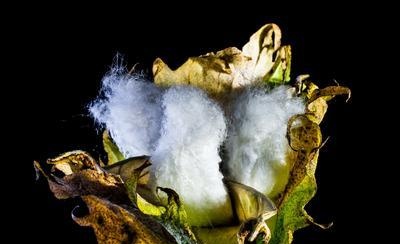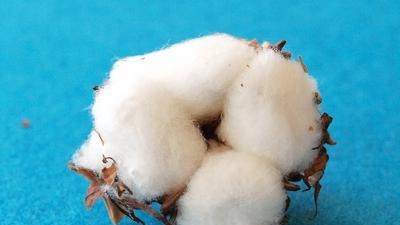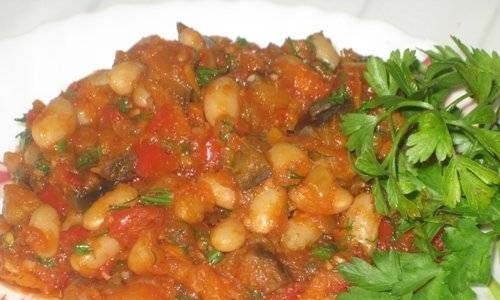|
 “The cotton grower sat in the grass, staring at the green stalks, like a hunter in ambush. He greeted me with a silent gesture, as if I could scare the beast he was tracking, and invited me to sit next to him. There was a light, dry crackling in the bushes. “The cotton grower sat in the grass, staring at the green stalks, like a hunter in ambush. He greeted me with a silent gesture, as if I could scare the beast he was tracking, and invited me to sit next to him. There was a light, dry crackling in the bushes.
The crackling was heard here and there, now nearby, now very far away. It was cotton bolls that burst, and at the same time they made sounds similar to the hiss of fried corn. "
So the journalist wrote. The crackling of the bolls is a sound to the cotton grower, both sweet and disturbing. It's nice to know that your hands have created “white gold”. It is alarming that it is still unknown whether all the boxes will open and whether the rains will interfere with the cleaning.
Difficulties begin in spring. Cotton is a child of the tropics. The weather will let you down - and the seedlings are rare. We have to re-seed. It happens. that reseeding does not bring good luck either.
 Cotton grower Tursunoy Akhunova, Hero of Labor and laureate, recalls how one day such an incident happened on her field. Seedlings after reseeding were unreliable. Cotton grower Tursunoy Akhunova, Hero of Labor and laureate, recalls how one day such an incident happened on her field. Seedlings after reseeding were unreliable.
The chairman came running and shook his head. “We need to water,” he rustled, “otherwise we will ruin the harvest. Cotton loves water. If you pour it, it will go away! "
Tursunoy had a different opinion. It is not necessary to water, but, on the contrary, to loosen the earth and give air to the roots. Otherwise, root rot will go, and nothing will grow. The agronomist supported Akhunova. But the chairman stood his ground. The commission of the Central Committee of Uzbekistan was summoned.
The commission spent a long time walking through the fields. The solution was the same: Akhunov's rights. The agronomist is right. It is not necessary to water, but to loosen. And cotton that year was a success.
And here's another puzzle. It would seem quite simple. How to sow - thick or rare? But scientists have been working with it for a hundred years. And so far they have not yet come to a consensus.
Let's try to imagine rare crops. The less often, the more powerful the bushes. The more boxes on them. If there are ten bushes on one square meter, then twenty boxes will open on each of them. And if you plant it thicker, then there will be fewer boxes. It turns out that you need to sow less often?
In fact, this question is not at all simple. At the beginning of the century, the director of the Turkestan Experimental Station for Agriculture R. Schroeder warned cotton growers: do not plant rarely, do not chase the number of boxes. How would not have to cry!
Autumn came, and those that rarely sowed fell into despair. There was almost nothing to collect. The bushes grew mighty, even now for the exhibition. And out of the mass of boxes, barely one tenth was ripening. But at the experimental station, fibers were collected in abundance. They sowed heavily there. Plants crowded together, grew low. There were very few boxes on them, but every one of them was ripe, full of fibers.
 Since then, they began to sow thickly. So that there are fifteen pieces per square meter. And under Soviet rule, the rate was increased even more. And they sowed no longer randomly, but with an ordinary seeder. Twenty pieces per meter. The harvest was very high. True, some scientists have proposed to thicken the sowing. Sow fifty or even seventy-five. But it turned out that too much density is also harmful. Everything in moderation. With too much density, the plants grow too weak. And the harvest is decreasing. And the fiber gets worse. Since then, they began to sow thickly. So that there are fifteen pieces per square meter. And under Soviet rule, the rate was increased even more. And they sowed no longer randomly, but with an ordinary seeder. Twenty pieces per meter. The harvest was very high. True, some scientists have proposed to thicken the sowing. Sow fifty or even seventy-five. But it turned out that too much density is also harmful. Everything in moderation. With too much density, the plants grow too weak. And the harvest is decreasing. And the fiber gets worse.
You, of course, understand that the most difficult issue is pest control. A lot of them. Perhaps the most dangerous pest is the cotton scoop. The scoop is fought with the help of chemistry. But just recently, leafing through the latest issue of a magazine on agriculture, I came across an interesting article.
It said that they successfully dealt with the scoop in Central Asia using dendrobacillin.
The word "dendrobacillin" seemed familiar to me. And I remembered a story that I witnessed several years ago. This story happened near Lake Baikal.Soon after the war, the Siberian silkworm appeared in the cedar forests of the Baikal region. Its caterpillars in thousands crawled over the cedar needles and devoured it. After them, bare branches remained. And on the site of cedar forests - forest cemeteries.
At that time, Professor of Irkutsk University E. Talalaev came to the taiga. He examined the dead trees, looking for dead caterpillars on the branches. Will there be at least one who died from the disease? Found it. And not one, but several. Ripped open. Inside was a black liquid like thickened ink.
In the laboratory, a deadly bacillus was isolated from a black liquid. They were taken to Leningrad. Propagated. We made the drug dendrobacillin. They loaded the plane. Sprayed over the dying cedar forests near Lake Baikal. Microbial dust was supposed to cause a massive illness among caterpillars - an epizootic. Talalaev calculated when the outbreak would begin. The time came, but there was no outbreak. The caterpillars were still moving through the forest, crawling from branch to branch. They made an ominous noise in the taiga. It seemed like it was raining invisibly.
When I came to Talalaev on Baikal, he was sitting in the laboratory with his head in his hands. I read a dumb question in his eyes. Why? Why did the caterpillars die in the laboratory from dendrobacillin, but do not die in nature? Is it really all gone: money, energy, time, cedar forests?
 No, not lost. The professor was only a few days wrong. And when they passed, a creeping armada immediately fell to the ground. At the same time, a scoop attacked cotton in Central Asia. Either they did not have enough chemicals there, or for another reason, but Talalaev received a letter with a request to send his drug. The professor still had dendrobacillin. He shared with the cotton growers. Soon the scoop was finished. The Siberian drug is effective to this day. No, not lost. The professor was only a few days wrong. And when they passed, a creeping armada immediately fell to the ground. At the same time, a scoop attacked cotton in Central Asia. Either they did not have enough chemicals there, or for another reason, but Talalaev received a letter with a request to send his drug. The professor still had dendrobacillin. He shared with the cotton growers. Soon the scoop was finished. The Siberian drug is effective to this day.
And now a few words about the jackal, which has the most direct relation to cotton. The jackal is a harmless creature, but he is always under suspicion. Either overeat grapes, then run to the melon and bite off a piece of melon. Melon growers, of course, are offended. They complained to the poet, and he wrote the following poem:
At night we will not sleep, we will guard melons,
And then the jackals will swoop in, our melons will eat!
Melon growers, probably, did not think that the jackal brings more benefit than harm. Cotton plants are often harmed by crickets. The jackal loves crickets more than melons. During the night, he destroys forty or fifty pieces.
My story would not be complete if I did not mention weed grasses. They also interfere with the growth of cotton. And they are fighting against them. The easiest way, of course, is to spray the plantations with pesticides. But if you think about it, you can find a completely harmless and safe way. And not even one. Scientists have proposed two-tier plowing. And the weeds immediately began to decline.
Less weeds - less wilt (a dangerous disease caused by the verticillus fungus). In the fight against wilt, resistant varieties are developed. Even small children of cotton growers now know about them. Tursunoy Akhunova says: when the first seeds of vilt-resistant varieties were brought to them on the collective farm, her daughter was the first to report them with delight. Varieties of varieties, and they found an even simpler remedy. We noticed that if you sow alfalfa, then after it the wilt will be two, or even three times less!
A lot of tasks were given to cotton growers and seeds. At first, they were ignored at all. They just threw it away like unnecessary trash. Piled up in heaps, and they rotted in the sun. A cloud of flies hung over them. Then they found that they were quite edible for livestock. Especially for pigs. They began to take out rotting wealth to the place where lazy pigs basked in the puddles. Sows with appetite devoured the free food. Lie down, rest and eat!
 The idyll, however, did not last long. Chemists soon discovered an excellent oil in the seeds. Immediately, the pork diet was limited. Now butter went to people, and pomace went to livestock. And here again there was a hitch. The pigs' liver and kidneys began to malfunction. They accumulated a pale yellow seed poison - gossypol (named after cotton - gossypium). The idyll, however, did not last long. Chemists soon discovered an excellent oil in the seeds. Immediately, the pork diet was limited. Now butter went to people, and pomace went to livestock. And here again there was a hitch. The pigs' liver and kidneys began to malfunction. They accumulated a pale yellow seed poison - gossypol (named after cotton - gossypium).
Gossypol was found to be harmless to ruminants.The cows ate the cake without any ill effects. Chickens did not seem to suffer from gossypol either. But they began to notice that their eggs, lying in the refrigerator, show strange transformations. The yolk takes on a deathly olive color. It is unpleasant to eat such eggs. The way out, however, was found. Added iron to the feed. The toxic properties have disappeared.
In recent years, several varieties of cotton have been created free of gossypol. As for the oil, scientists have noticed that the best comes from the best seeds. They were sent to the plant. For sowing, they left what was worse. Here harvests began to fall. I had to urgently rebuild and divide the good seeds equally between the field and the plant.
Meanwhile, the fields widened. Guza, an old cotton plant that has been cultivated in Central Asia from time immemorial, has long been forgotten. Guza gave, in general, good yarn. She was a silk child. But the fiber was short. When the seeds were separated, very little of it remained. And the boxes hardly opened.
Academician N. Vavilov noticed this long ago. Back in the thirties, he went to Mexico and found a replacement for the guze there. There are now many different varieties. They give a thin and very long fiber.
A. Smirnov. Tops and roots
Read now
All recipes
|
 “The cotton grower sat in the grass, staring at the green stalks, like a hunter in ambush. He greeted me with a silent gesture, as if I could scare the beast he was tracking, and invited me to sit next to him. There was a light, dry crackling in the bushes.
“The cotton grower sat in the grass, staring at the green stalks, like a hunter in ambush. He greeted me with a silent gesture, as if I could scare the beast he was tracking, and invited me to sit next to him. There was a light, dry crackling in the bushes. Cotton grower Tursunoy Akhunova, Hero of Labor and laureate, recalls how one day such an incident happened on her field. Seedlings after reseeding were unreliable.
Cotton grower Tursunoy Akhunova, Hero of Labor and laureate, recalls how one day such an incident happened on her field. Seedlings after reseeding were unreliable. Since then, they began to sow thickly. So that there are fifteen pieces per square meter. And under Soviet rule, the rate was increased even more. And they sowed no longer randomly, but with an ordinary seeder. Twenty pieces per meter. The harvest was very high. True, some scientists have proposed to thicken the sowing. Sow fifty or even seventy-five. But it turned out that too much density is also harmful. Everything in moderation. With too much density, the plants grow too weak. And the harvest is decreasing. And the fiber gets worse.
Since then, they began to sow thickly. So that there are fifteen pieces per square meter. And under Soviet rule, the rate was increased even more. And they sowed no longer randomly, but with an ordinary seeder. Twenty pieces per meter. The harvest was very high. True, some scientists have proposed to thicken the sowing. Sow fifty or even seventy-five. But it turned out that too much density is also harmful. Everything in moderation. With too much density, the plants grow too weak. And the harvest is decreasing. And the fiber gets worse. No, not lost. The professor was only a few days wrong. And when they passed, a creeping armada immediately fell to the ground. At the same time, a scoop attacked cotton in Central Asia. Either they did not have enough chemicals there, or for another reason, but Talalaev received a letter with a request to send his drug. The professor still had dendrobacillin. He shared with the cotton growers. Soon the scoop was finished. The Siberian drug is effective to this day.
No, not lost. The professor was only a few days wrong. And when they passed, a creeping armada immediately fell to the ground. At the same time, a scoop attacked cotton in Central Asia. Either they did not have enough chemicals there, or for another reason, but Talalaev received a letter with a request to send his drug. The professor still had dendrobacillin. He shared with the cotton growers. Soon the scoop was finished. The Siberian drug is effective to this day.






